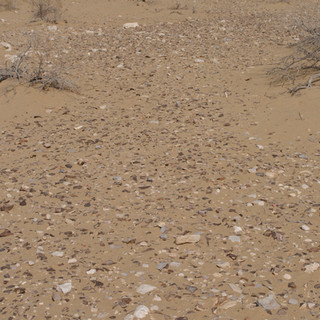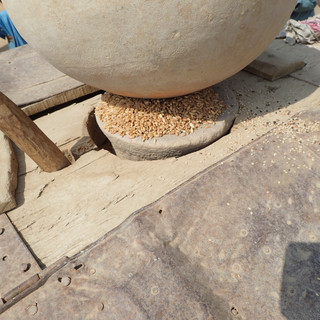JASPAR
- Carla
- 26 mar 2018
- 3 Min. de lectura
There are so many things to do and fix after coming back from fieldwork that it has taken some time to write this blog entry. However, even if a tad late, here are some of the amazing things we have been doing in Sindh last month (my, oh my!).
First of all, project name: JASPAR. The JApanese, SPanish, Pakistani Archaeological Research Initiative, unites three different projects as I explained in the past entry. In this entry I will give you a brief overview of what we have being doing for each project, though the research aims of the three are so similar and the overlap between them so ample that the separation is really just for clarity of exposition.
PalaeoAsia: as the main focus of this project is on Palaeolithic, we toured some of the known Palaeolithic sites in the area with the aim of finding some in situ, stratified stone tools. Sindh, and particularly the area ok Khairpur, is very rich in Palaeolithic sites, especially in the renowned Rohri Hills, which have some of the best deposits of chert in South Asai and which were exploited from the Palaeolithic throughout the Harappan times. At some point it looked like we hit gold and found a nice deposition of Upper Palaeolithic material buried in a dune but a short section cleaning (after duly documenting the site) revealed that it was a secondary deposition.
Another aim of the PalaeoAsia project, shared by ModAgro and RAINDROPS, is that of finding suitable contexts for palaeoenvironmental reconstruction, especially for what concerns dating of desert dynamics. So, another main activity of the past fieldwork has been to look for suitable sampling sites, trying to make the most of the constant work of canal digging and other activities which were offering us nice, big, open sections ready to sample. We were fortunate enough of finding some such trenches and we were able to get some good samples.
ModAgro focuses more on the beginning of agriculture in the area, so the main aim for this leg of the project was to find suitable archaeological sites, dated to the end of 4th, beginning of 3rd millennium BC (Kot Dijian or pre-harappan phase) where to get good archaeobotanical and dating material. Luckily, the area is very rich in this type of sites being home to Kot Diji itself, as well as many Urban Harappan sites which can provide plenty of information on agricultural practices in the area.
And last, but not least, this field season for RAINDROPS was aimed principally at making contacts with local villages in order to find suitable locations for ethnoarchaeological work. It has not been an easy task as the whole area is today heavily irrigated, with hundreds of km of canals departing from the Sukkur barrage on the Indus and criss-crossing the landscape, creating a very fertile plain where the main crops are wheat and palm dates. The results are impressive, with green fields of wheat nested between high sand dunes. However, not very good for studying traditional rainfed agriculture. We had a very informative (and somehow emotional) interview with a pastoral community on the very first day, but unfortunately they do not grow any crops. Luckily, on the last day we visited the perfect spot for conducting the interviews for the project: an amazing village, located at the edge of the Kirthar range, where they still cultivate rainfed sorghum and other millets. The people were so welcoming and opened the doors of their houses, assuring me that I am going to be welcome whenever I will decide to visit and stay with them in the typical south asian warm hospitality. Now I only have to decide when to go....








































Comentarios